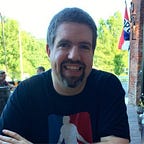“Public Enemy No. 1” Is A Pause-Tape Beat
During the 1980s Public Enemy’s in-house production team The Bomb Squad revolutionized how rap records were made and challenged the simpler instrumentals of the day by utilizing a wall of sound, loop-stacking approach. Not yet constrained by a post-Biz Markie and De La Soul sample lawsuit music industry, the sheer volume of disparate sounds The Bomb Squad were able to sew together is remarkable. Though rap still struggled mightily for mainstream respect at this point in time, Public Enemy’s style was so innovative it won them the favor of critics from several major publications. In a 1990 review of Fear of a Black Planet New York Times writer Peter Watrous described their production as, “layer after layer of sounds are placed on top of each other until the music becomes nearly tactile.”
Beyond winning over many respected music critics, their novel approach inspired a slew of pioneering producers and influenced many seminal albums of the 80s and 90s. “Early Public Enemy production used layers upon layers and layers, and their arrangements were always super duper incredible to me,” said frequent De La Soul collaborator and producer Prince Paul while discussing the making of De La Soul is Dead with Micro-Chop. “We [De La Soul] were kind of like students to what they did. To me, our production didn’t even come close to what they were doing.”
Although critics, fans, and peers held their music in the highest regard, group frontman and rapper Chuck D admitted that the group wanted to create music that challenged the typical listener in the 80s. “I’m making some shit that makes you say, ‘Turn that shit off,’” he told Red Bull Music Academy in 2013. “Our whole thing is, ‘How can we present something that will make you feel uncomfortable?’ Don’t deal in comfort.”
“People don’t realize that the sampling at the time wasn’t — when I first did the first record, it wasn’t available. So we had to kind of like invent that.” — Hank Shocklee
Chuck’s idea to make “Public Enemy No. 1” — one of The Bomb Squad’s best known records— started with the group’s fondness for the challenging sample source of Fred Wesley and The J.B’s “Blow Your Head”. Beyond using a difficult sample source with an unconventional rhythm, The Bomb Squad also employed a feat of home stereo system mastery to make one of the group’s breakout singles. In a 2015 interview with NPR’s Microphone Check, Bomb Squad member/Public Enemy producer Hank Shocklee stunned co-host and former A Tribe Called Quest member Ali Shaheed Muhammad when he revealed that the song “Public Enemy No. 1” was actually a pause-tape beat.
For young hip-hop fans without the means to purchase expensive samplers of the day, pause-tapes were an early DIY way of producing. Using dual cassette decks, aspiring producers would play and record a sample from another tape or record, pausing the tape when the sample had finished its rotation. They would then rewind to the beginning of the sample and un-pause the tape, starting the process again and extending the sample loop for several minutes. Those with more advanced setups would sometimes use a 4-track recorder or an overdubbing feature to layer different pause-tape loops together to construct a proper beat.
Though samplers like the Emu SP-12 and 1200 were starting to make their way onto the market by the mid/late 80s, sampling technology was still price prohibitive and difficult to come by when The Bomb Squad recorded Yo! Bum Rush the Show in 1986, which often led to the use of workarounds like pause-tapes a la “Public Enemy No. 1”. “Before there was any samplers — because people don’t realize that the sampling at the time wasn’t — when I first did the first record, it wasn’t available,” Shocklee said in his Microphone Check interview. “So we had to kind of like invent that.”
“Our whole thing is, ‘How can we present something that will make you feel uncomfortable?’ Don’t deal in comfort.”
— Chuck D
Shocklee goes on to explain how a well-known studio engineer was helped the group take the raw pause-tape beat and turn it into a cleaner sounding final product. But the undeniable fact remains: one of Public Enemy’s most recognizable songs started as a pause-tape creation.
For Shocklee, the experience of making a hit record out of pause-tape beat taught him that he didn’t necessarily need gear with the most polished sound or endless features to make a lasting final product. “A lot of people think that when you’re dealing with equipment, you want to get the best resolution,” he told Microphone Check. “You want to get the highest amount of bandwidth or whatever the case is that you’re looking for. And I’m like, ‘Sometimes [that’s] not so.’ Because it’s all about working with gear. And when you work with gear you can use anything.”
Public Enemy’s early work is a testament to this line of thinking. Though some of the songs might have been composed on little more than home stereo equipment, they continue to endure over thirty years since they were first recorded.
Connect with Public Enemy on Facebook, YouTube, and Twitter @publicenemyftp
Want more engaging narrative non-fiction music journalism and curated playlists? Sign up for the Micro-Chop Substack newsletter.
If you enjoyed this piece, please consider following my Micro-Chop publication.
